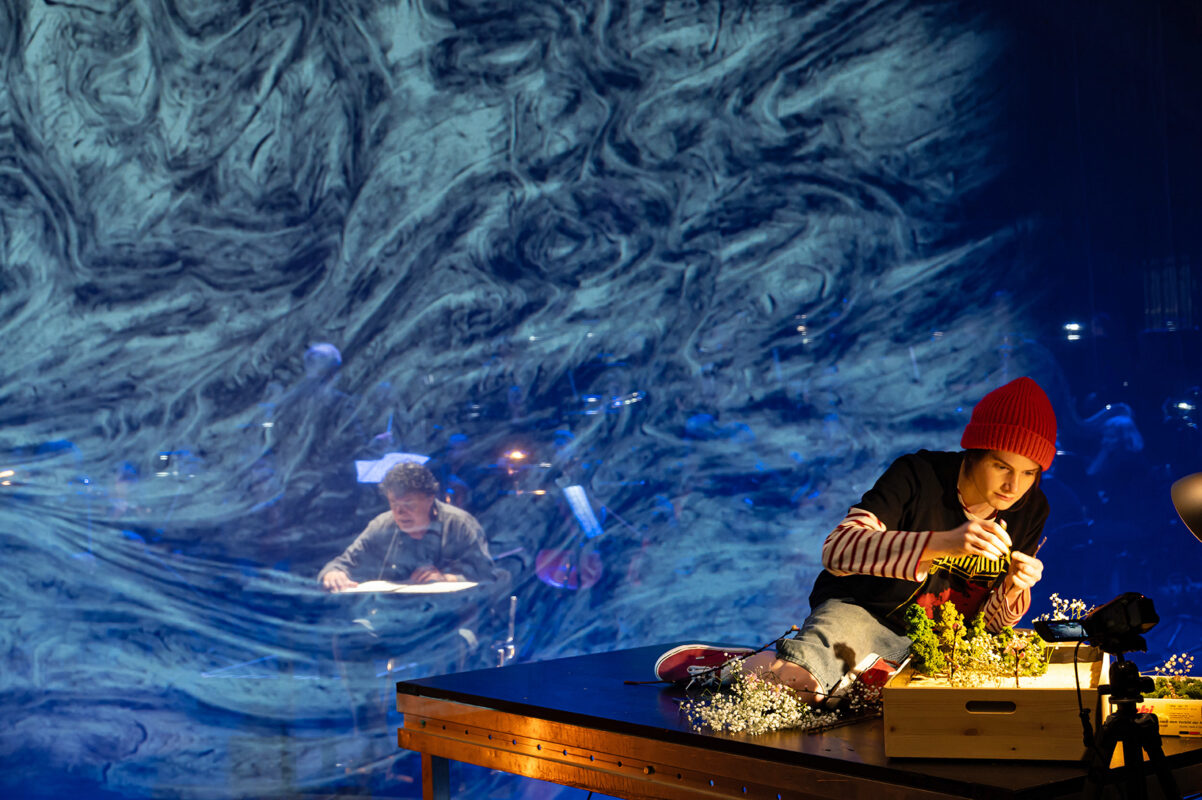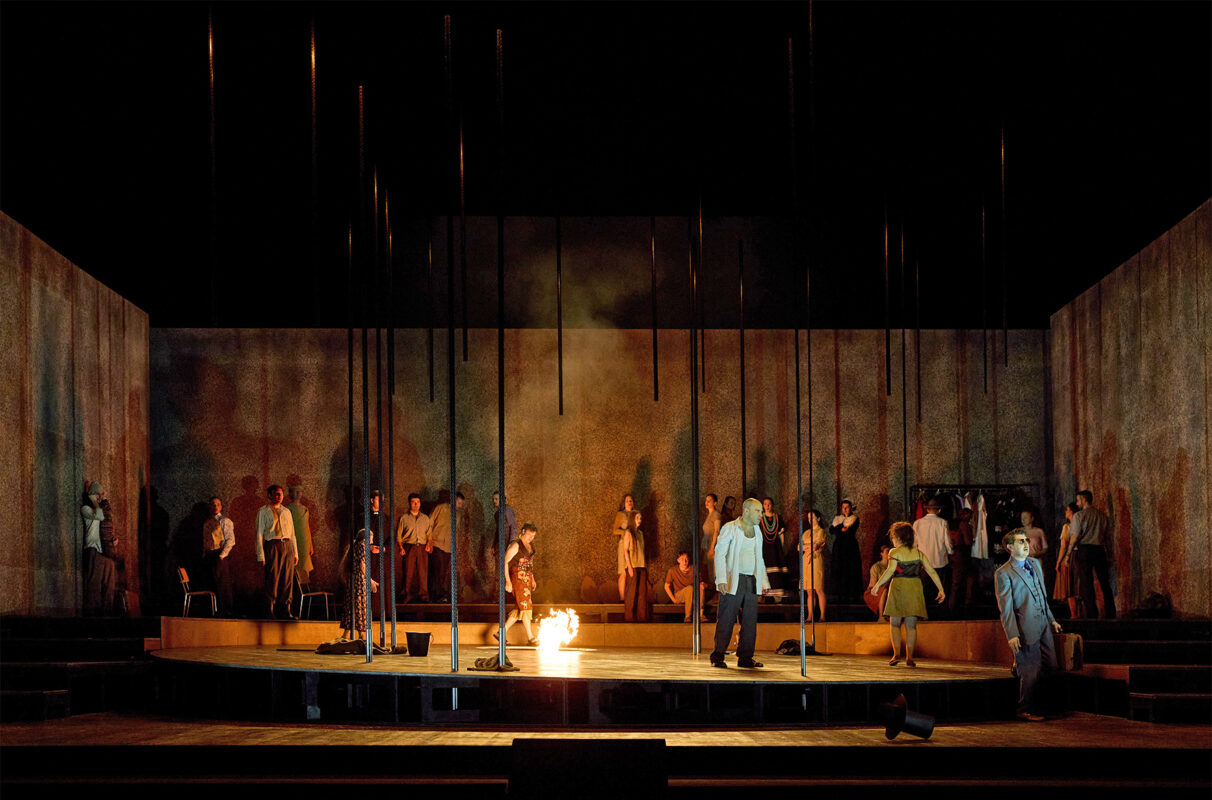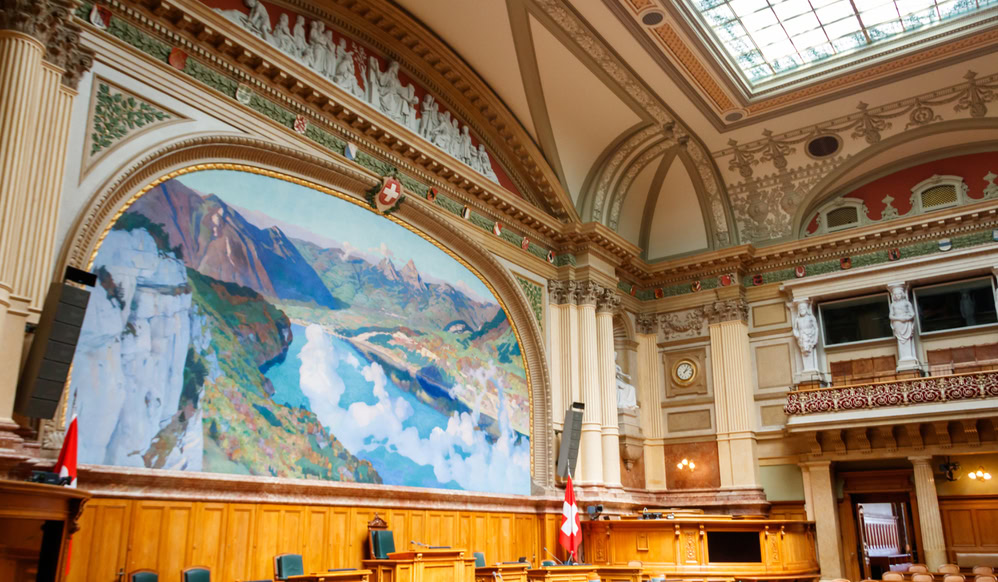The sound of bells in St. Gallen
All 118 church bells of St. Gallen in one big event: "Zusammenklang" was the order of the day, musically, but probably also politically and denominationally.
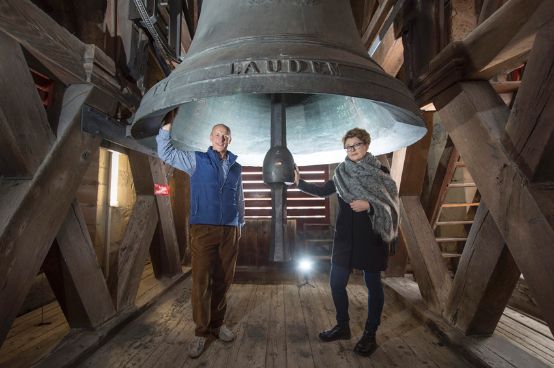
The easiest and most impressive way would probably have been to let all 118 bells of this elongated sausage (as one St. Gallen resident called his town) swing and ring at once. That would have filled the air, but might have been a little too uniform in the long run. And so on August 21, at the big Harmony She did not stop there, but began to design and compose this vast ensemble of bells. Moscow-born music teacher and composer Natalija Marchenkova Frei missed harmony when she first heard the imposing bells ringing over the city fifteen years ago. It was then that she came up with the idea of combining these bells as if they were part of an orchestra - and thus creating a harmonious melody.
A year and a half ago, she finally began knocking on the door of the authorities to see if something like this was even possible. At around the same time, tuba player Karl Schimke, who comes from the USA and works for the St. Gallen Symphony Orchestra, independently set about realizing his own bell visions. The two found out about each other by chance, met up and set off together. The first step was to convince the political and church leaders. The two found open doors everywhere. All the churches in unison - what a wonderful idea for a community! Marchenkova Frei is also thinking of ecumenism. However, because the event was not defined exclusively in religious terms, it was not held as a church festival. Now, on Sunday afternoon, it served as a contemplative finale to the St. Gallen town festival.
The biggest obstacle was the technology. Firstly, the bells are normally all operated automatically; a bell ringer no longer hangs from any of them to swing them open with a rope. This automatic system had to be overridden first. On some of them, the drop hammer, which would otherwise be triggered automatically, could be operated by rope. However, this was not so easy with around fifty bells. In order to strike the bell as precisely as possible, the clappers, some of which were heavy, were pulled up very close to the edge of the bell so that a light pull on a rope was enough to strike it. The bell ringer knew exactly when and where to pull via a specially developed cell phone app.
All the bells of a city in unison. Of course, this is not an absolute novelty. Church bells ring together on national holidays and at the turn of the year, for example. A large peal was organized for Winterthur's city celebrations. And Tallinn celebrated the end of its year as European Capital of Culture with a Singing of the tower bells (Tornikellade laul), composed by Estonian Margo Kõlar for 47 bells. These are sound events that remain in the memory.
In the case of St. Gallen, however, the realization was particularly "tricky" due to the aforementioned bratwurst location. The distance between the outermost churches is sixteen kilometers. It takes a good twenty seconds before the bells of St. Gallen Winkeln can be heard in the city. And everything had to be clearly audible from an "ideal" point on the meadow below the Buebenweiher pond - a tricky task. First of all, it had to be calculated when the bell sounds would arrive there, taking into account the weather and wind conditions. Bernd Jansen from the IT company Namics, together with Kirchenturmtechnik Muff, developed the technology to control these sounds as precisely as possible: so that two bell tones that were not triggered at the same time would arrive at that listening point at the same time - because it was also about composition.
The first part was an introduction designed by Schimke, which opened up the listening space in a suggestive way. This was followed by Marchenkova Frei's composition after three quarters of an hour, which was reminiscent of everyday life: a piece lasting just under fifteen minutes, based on a very reduced sound material that was developed in 21 variations. The basic notes g-b were provided by the main churches: the cathedral and St. Laurenzenkirche. Finally, a low e spoke the Amen over the composition.
The sound fields unfolded wonderfully over the city at times, although sometimes the balance was not achieved. From the west, a wide space resounded with staggered bell sounds; almost directly in front of the meadow, the bright and somewhat intrusive sound of the Linsebühlkirche dominated, so that all the churches behind it were drowned out. This somewhat obscured the flow of the composition. Further experience would probably be needed to make the piece more comprehensible to the audience. Because many had come and attended the ringing. Luckily, all the bells then resonated together beautifully. - Of course, that can only mean one thing: A continuation would therefore be in order to deepen the experience and explore the sound above the city more intensively. The St. Gallen ringing should become a tradition.
-
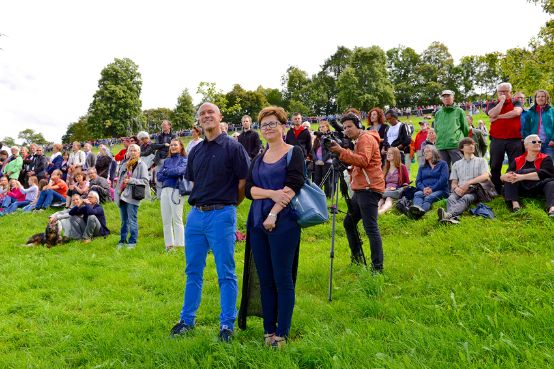
- Photo: Klaus Stalder
- Natalija Marchenkova Frei and Karl Schimke






